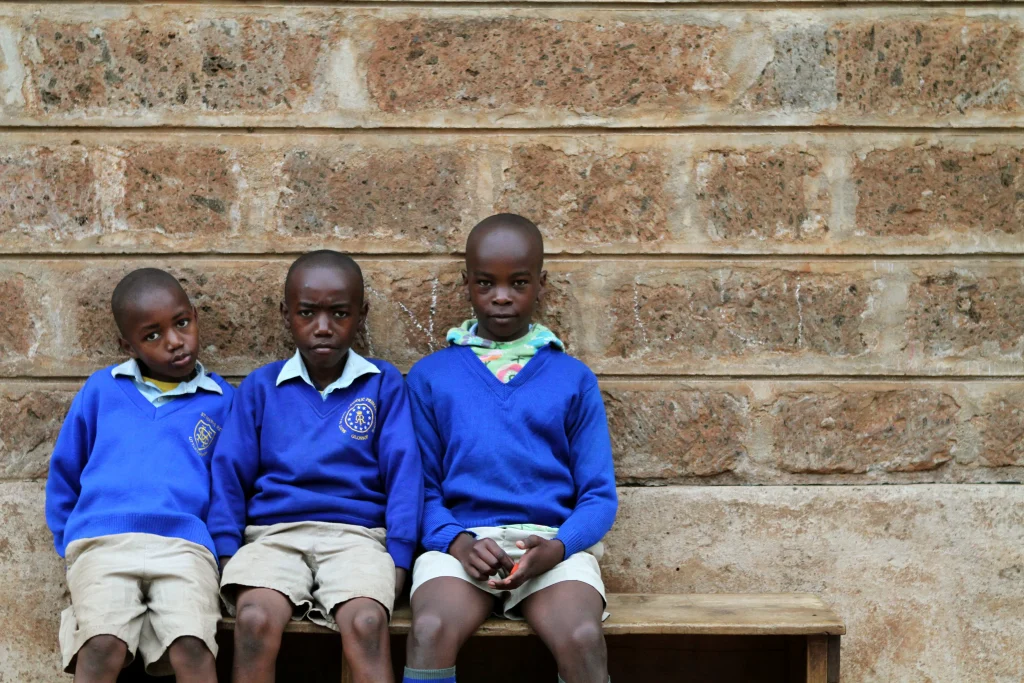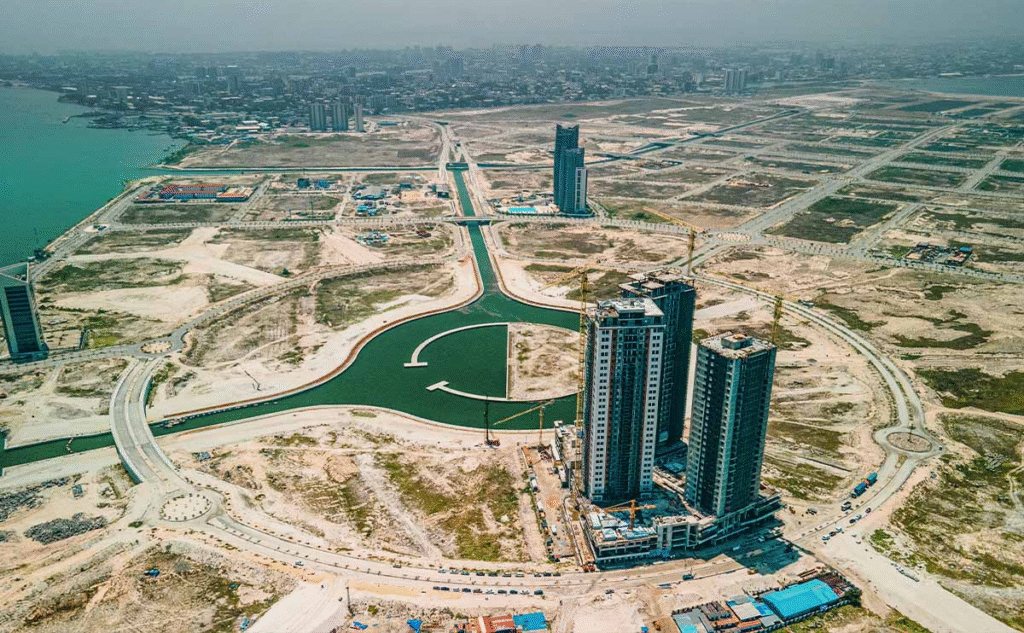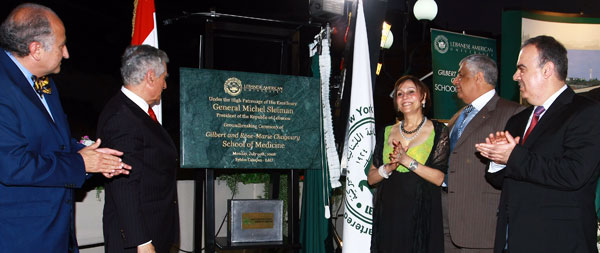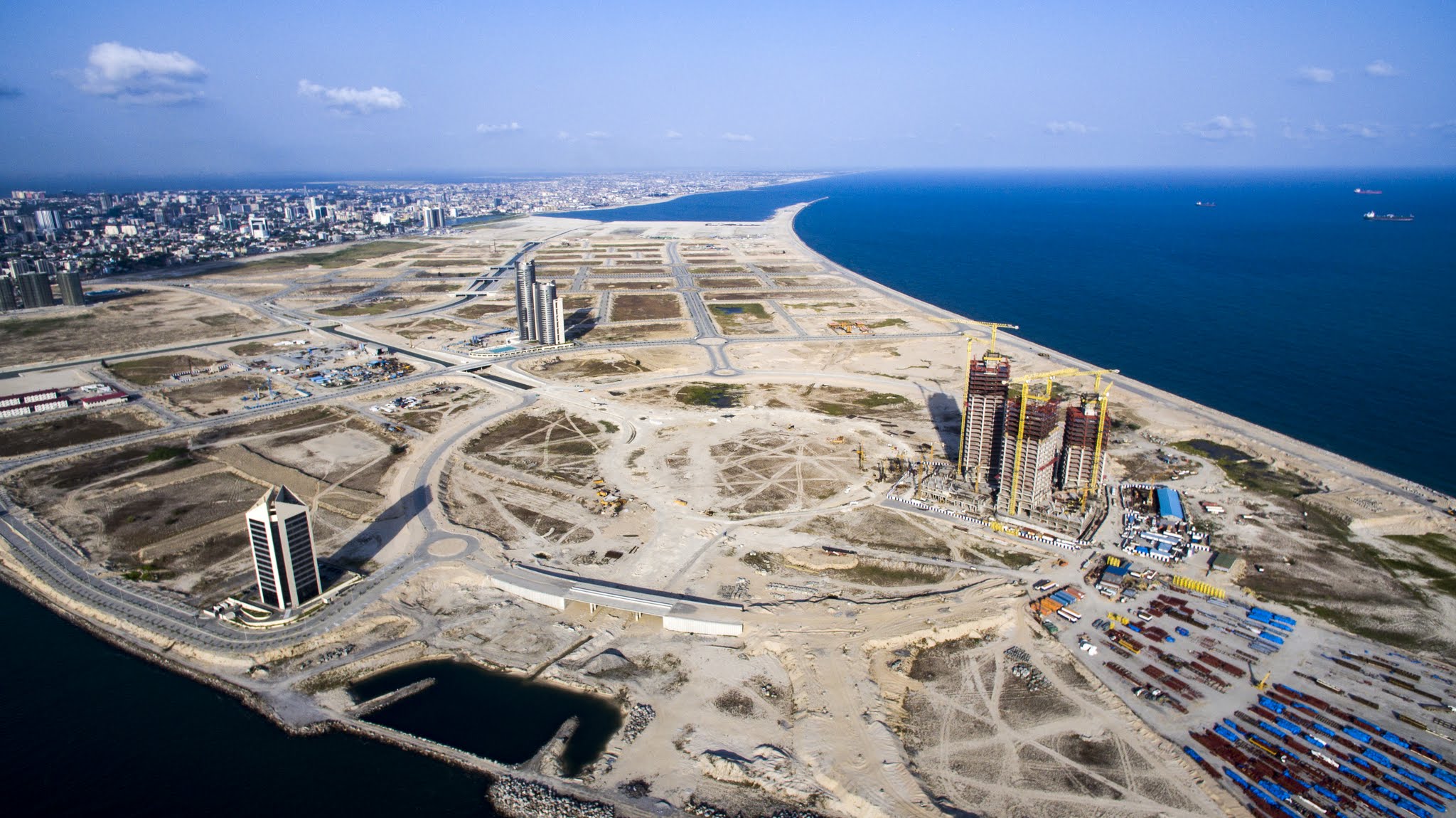International development projects in Africa are more than construction plans or aid programs. They represent the foundation for growth, stability, and opportunity across a continent that holds enormous potential. Africa faces urgent gaps in infrastructure, healthcare, and education, with hundreds of millions still lacking reliable electricity, schools, and roads. According to the African Development Bank, the continent requires between $130 and $170 billion each year in infrastructure spending, yet faces a financing shortfall of more than $68 billion. These numbers highlight why development is not optional but essential for sustainable progress.
Within this landscape, Gilbert Chagoury stands out as both a businessman and a philanthropist who understands the transformative power of such investments. Born in Nigeria to Lebanese parents, he built the Chagoury Group into one of West Africa’s most influential conglomerates. Beyond business success, his projects have combined economic development with social responsibility, from reclaiming land to building resilient coastal cities. His story is closely tied to Nigeria’s growth, yet his influence and recognition stretch across Africa and beyond, making him a symbol of how private leadership can serve the public good.
This blog will explore how international development projects in Africa are reshaping the continent and how the Chagoury Group contributes to this progress. We will look at Africa’s wider development needs, highlight landmark projects, and show how Gilbert Chagoury’s leadership aligns with the continent’s drive for growth.
Africa’s Development Landscape

Africa is a continent of vast resources and opportunity, but it also faces some of the world’s most pressing challenges. International development projects in Africa often target critical gaps such as roads, electricity, water, and healthcare. According to the African Development Bank, governments currently invest about $80 billion annually in infrastructure, yet the need stands at $130 to $170 billion, leaving a shortfall that slows growth and limits opportunities. This gap illustrates why both public and private sector involvement is vital for progress.
Beyond infrastructure, human development indicators reveal similar challenges. Nearly 600 million people lack electricity (IEA), while 100 million children are out of school across Sub-Saharan Africa (UNICEF). The World Bank estimates that the region accounts for 67 percent of the world’s extreme poor, despite representing only 16 percent of the global population. These numbers show the scale of the task but also the urgency of action.
At the same time, Africa is positioned for transformation. With a population projected to double by 2050, the continent offers one of the world’s youngest labor forces and fast-growing urban centers. International development projects in Africa, when done effectively, not only close gaps but also unlock long-term growth. This potential makes Africa central to the global development agenda and explains why partnerships with institutions and visionary leaders are more critical than ever.
The Role of Infrastructure in Development
International development projects in Africa often begin with infrastructure. Roads, ports, and energy systems create the foundation for trade, healthcare delivery, and education. Without them, progress in other sectors slows.
Bridging the Infrastructure Gap
The African Development Bank estimates a financing shortfall of $68 to $108 billion each year. Governments alone cannot cover this cost. Partnerships with private companies and international donors are essential. Roads and transport corridors, for example, directly reduce trade costs and improve regional integration.
Energy Access as a Priority
Electricity remains one of the continent’s most pressing needs. More than 600 million people still live without reliable access to power (IEA). Projects like the World Bank’s Mission 300 aim to connect 300 million Africans within six years, but private investment will be required to achieve these goals.
Why It Matters for Poverty Reduction
Infrastructure has a direct impact on poverty. Research shows that in Sub-Saharan Africa, 1 percent GDP growth results in only a 1 percent poverty reduction (World Bank Africa’s Pulse), highlighting the need for infrastructure that creates lasting economic multipliers. Better transport, logistics, and electrification expand opportunities for businesses and improve daily life.
International development projects in Africa that focus on infrastructure, therefore, play a central role in building inclusive economies. They not only support growth but also reduce inequality by connecting communities to markets and services.
Education and Healthcare as Development Multipliers

While infrastructure builds the foundation, education and healthcare provide the skills and resilience needed for long-term progress. International development projects in Africa that focus on human capital are critical for sustainable growth.
The Education Challenge
UNICEF estimates that 100 million children of primary and secondary age are out of school across Sub-Saharan Africa. In addition, the World Bank highlights that 9 in 10 ten-year-olds cannot read a simple text, a crisis of learning poverty. Without urgent action, Africa’s young population risks being underprepared for the global economy.
Healthcare Gaps
Public health challenges continue to limit growth. Millions lack access to basic services, and shortages of doctors and nurses reduce the quality of care. Investment in hospitals, medical schools, and training centers is vital. Projects that build capacity in healthcare directly improve productivity by reducing illness and improving life expectancy.
Why Human Capital Matters
Education and healthcare multiply the effects of infrastructure. Roads and power matter little if children cannot attend school or workers remain unwell. International development projects in Africa that invest in people deliver some of the highest returns. They create healthier, more skilled populations that can drive innovation and economic resilience.
By aligning infrastructure with education and healthcare, Africa can unlock its demographic advantage. This holistic approach ensures that development projects create not only short-term improvements but also lasting change across generations.
Eko Atlantic — A Landmark in International Development Projects in Africa
Eko Atlantic in Lagos is one of the most ambitious international development projects in Africa. Built on reclaimed land from the Atlantic Ocean, it combines climate resilience with economic opportunity and reflects the vision of Gilbert Chagoury.
Protecting Lagos with the Great Wall
The project includes the Great Wall of Lagos, a sea-defense revetment planned to reach 8.5 km. Built by Hitech Construction (see Eko Atlantic’s Milestones PDF noting Lagos State’s shoreline-protection contract with Hitech), the wall protects Victoria Island and parts of Lekki from erosion and storm surge. To date, over 6.5 million m² of land have been reclaimed for the city, according to engineering partner Royal HaskoningDHV, creating space for housing, offices, and core infrastructure across Eko Atlantic.
A New Economic Hub
Eko Atlantic is designed to house 250,000 residents and accommodate 150,000 daily commuters. Its financial district is expected to rival major global centers, attracting investment and creating jobs. By combining private funding with public approval, the project illustrates how large-scale infrastructure can address urbanization challenges in Africa. More about the Chagoury Group’s role in this transformation can be found on the Chagoury Group site.
Balancing Opportunity and Criticism
While praised for innovation, Eko Atlantic has faced concerns about affordability and inclusivity. Critics argue it may serve elites while neglecting Lagos’s poorest. Yet, the project remains a clear example of how international development projects in Africa can blend private enterprise with long-term urban planning. For Gilbert Chagoury, it reflects his commitment to combining business success with social impact (Gilbert Chagoury Blog).
Lagos–Calabar Coastal Highway — Connecting Communities

The Lagos–Calabar Coastal Highway is another Chagoury Group initiative that demonstrates the scale of international development projects in Africa. Stretching across Nigeria’s coastline, this multi-state project highlights how infrastructure can drive trade, tourism, and regional integration.
Scope and Delivery
The project spans over 700 kilometers, linking Lagos with Calabar through several coastal states. Constructed by Hitech Construction, it uses advanced pavement technology for durability. The highway is delivered under a public–private partnership model, ensuring collaboration between government and private investors.
Boosting Trade and Tourism
By connecting ports, airports, and major cities, the Lagos–Calabar Highway is expected to reduce transport costs and improve logistics. The African Continental Free Trade Area (AfCFTA) estimates that improved transport corridors can increase exports by 11.5 percent across the continent (UNCTAD).
Creating Jobs and Growth
Thousands of jobs have already been generated during construction, with more to follow as tourism and industry benefit from easier movement. This project shows how international development projects in Africa create ripple effects that extend well beyond infrastructure.
Shoreline Protection Beyond Eko Atlantic
International development projects in Africa must also address climate risks. Rising seas threaten livelihoods and urban centers, making coastal defenses vital. Chagoury Group has invested heavily in shoreline protection beyond Eko Atlantic.
Rock Groynes for Coastal Defense
Through Hitech Construction, the group built rock groynes and sea defense systems along vulnerable stretches of Nigeria’s coastline. These structures reduce erosion and safeguard communities east of Lagos. By stabilizing the shoreline, they protect homes, businesses, and infrastructure from destruction.
Safeguarding Economic Assets
Nigeria’s coastal states generate billions in GDP annually. Without protection, erosion could wipe out significant portions of this value. By building physical defenses, Chagoury Group contributes to economic stability while reducing disaster risks.
Climate Resilience as Development
These shoreline projects demonstrate the importance of integrating climate adaptation into development. International development projects in Africa cannot focus solely on growth; they must also secure communities against environmental threats. The Chagoury Group’s approach demonstrates how private actors can deliver both resilience and opportunity.
Building Africa’s Industrial Backbone
International development projects in Africa are not limited to highways and cities. Industrial capacity is equally vital, and the Chagoury Group has invested in manufacturing and food security for decades.
Food Security in Benin
In the 1970s, the Chagoury Group founded Grands Moulins du Bénin in Cotonou. With a daily capacity of 250 tons of flour, this mill became one of the region’s first major industrial projects. It supported local farmers, reduced dependence on imports, and improved food availability. By securing staple production it reinforced the foundation for broader development.
Glassforce in Nigeria
The group also launched Glassforce in Aba, Nigeria, a glass bottle manufacturing company. Supplying the food and beverage sector, it helped local businesses reduce costs and create jobs. Manufacturing facilities like this strengthen supply chains, ensuring that Africa’s growing consumer base has access to affordable goods.
Industrialization as Development
These ventures prove that international development projects in Africa extend beyond infrastructure. By building industries, the Chagoury Group created long-term value, jobs, and economic resilience. Industry remains a cornerstone of Africa’s future, and private players are critical to its growth.
Financing the Next Wave of Development

International development projects in Africa require massive financing. Governments cannot shoulder this responsibility alone, which is why private capital and partnerships are essential.
Mobilizing Local Resources
According to Reuters, Africa holds up to $4 trillion in local capital through pensions, sovereign wealth funds, and banks. Redirecting even a fraction of this toward infrastructure could close financing gaps. The Chagoury Group’s projects demonstrate how private investors can complement public funding.
Blended Partnerships
Projects like the Lagos–Calabar Highway and Eko Atlantic rely on public–private partnership models. These arrangements reduce risk for governments while ensuring professional expertise from companies like Hitech Construction. The African Development Bank highlights blended finance as a proven way to deliver large-scale results.
Why Private Capital Matters
Without private sector involvement, Africa’s infrastructure gap of $68 to $108 billion annually (AfDB) will remain. International development projects in Africa succeed when governments, donors, and businesses align resources and expertise. The Chagoury Group’s role shows how vision, capital, and execution can transform development plans into reality.
Human Capital and Healthcare Investments
Sustainable development requires people as much as infrastructure. International development projects in Africa must strengthen healthcare and education to prepare the next generation. Gilbert Chagoury has invested heavily in this area through philanthropy tied to regional capacity building.
The LAU Health Sciences Center

In 2008, Chagoury donated $13.5 million to the Lebanese American University (LAU). This gift funded the creation of the Chagoury Health Sciences Center in Beirut, which now houses schools of medicine, nursing, and pharmacy. Although based in Lebanon, its impact extends to Africa by training professionals who support regional healthcare systems.
Training a Skilled Workforce
The LAU medical school, developed with Harvard Medical International, opened in 2009. It introduced advanced teaching methods and clinical training that benefit not only Lebanon but also the wider Middle East and Africa. By improving access to skilled doctors and nurses, the initiative aligns with Africa’s healthcare priorities.
Human Capital as the Future
Education and healthcare multiply the effects of infrastructure. International development projects in Africa that combine physical assets with skilled people ensure lasting results. Chagoury’s investment in human capital underscores his belief that development must empower individuals as much as it builds institutions.
Conclusion: Advancing International Development Projects in Africa
International development projects in Africa are shaping the future of a continent rich with potential but challenged by urgent needs. From infrastructure and energy to education and healthcare, these projects create opportunities, reduce poverty, and strengthen resilience. Africa’s financing gap remains large, yet successful initiatives prove that when vision and investment align, transformation follows.
The Chagoury Group represents one such example. Through landmark projects like Eko Atlantic, the Lagos–Calabar Coastal Highway, and decades of investment in industry and shoreline protection, the group shows how private leadership can complement public priorities. By combining engineering expertise with a commitment to long-term value, it demonstrates how international development projects in Africa can achieve real impact. At the same time, Gilbert Chagoury’s personal investments in education and healthcare underline the role of human capital in sustaining growth.
This story is not only about roads, cities, or factories. It is about how one group, guided by vision and responsibility, contributes to Africa’s broader transformation. To explore more about Gilbert Chagoury and his philanthropic and development work, visit his personal blog and learn more about the Chagoury Group. Their record shows that development, when done with purpose, creates progress that lasts across generations.
